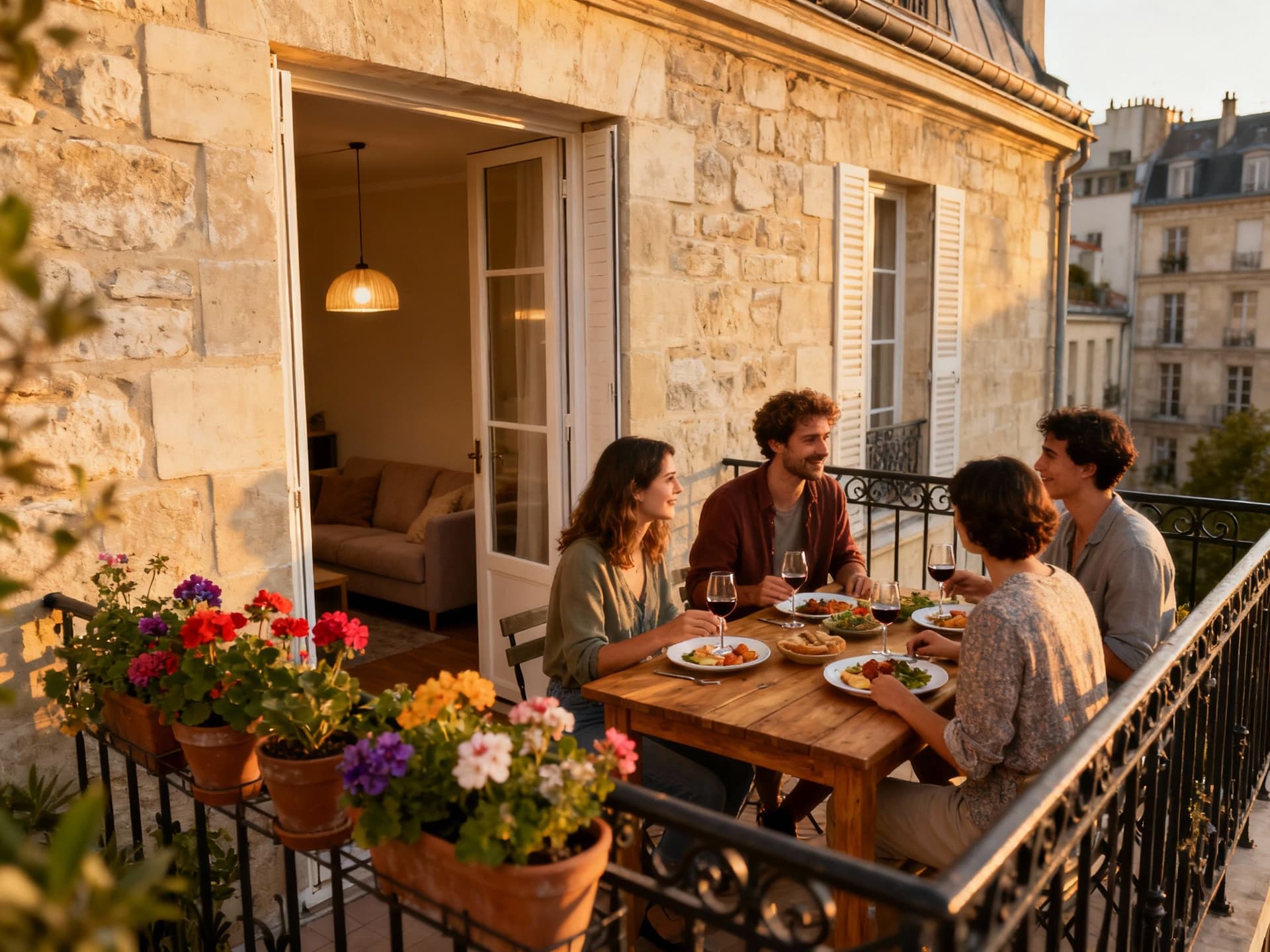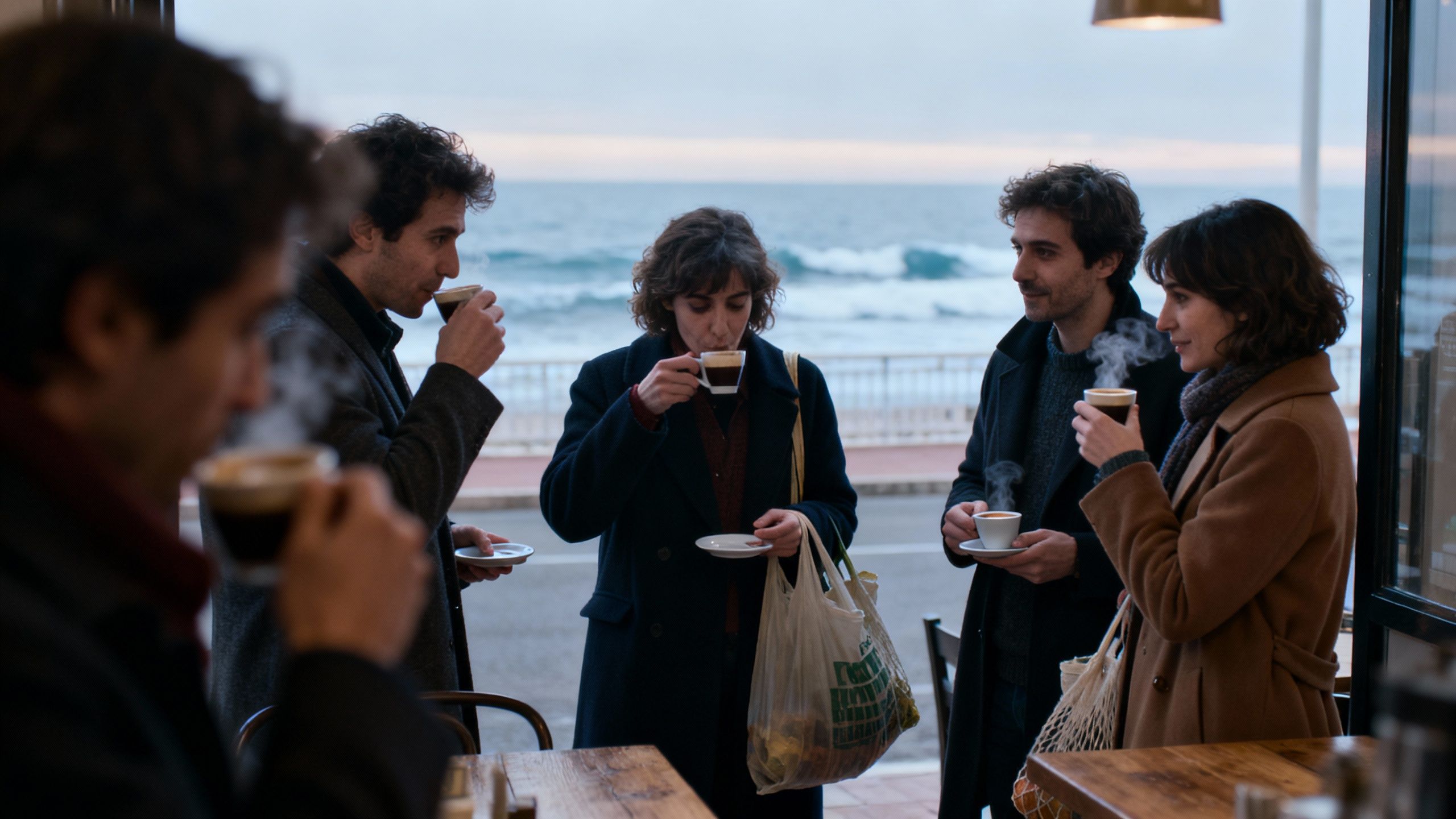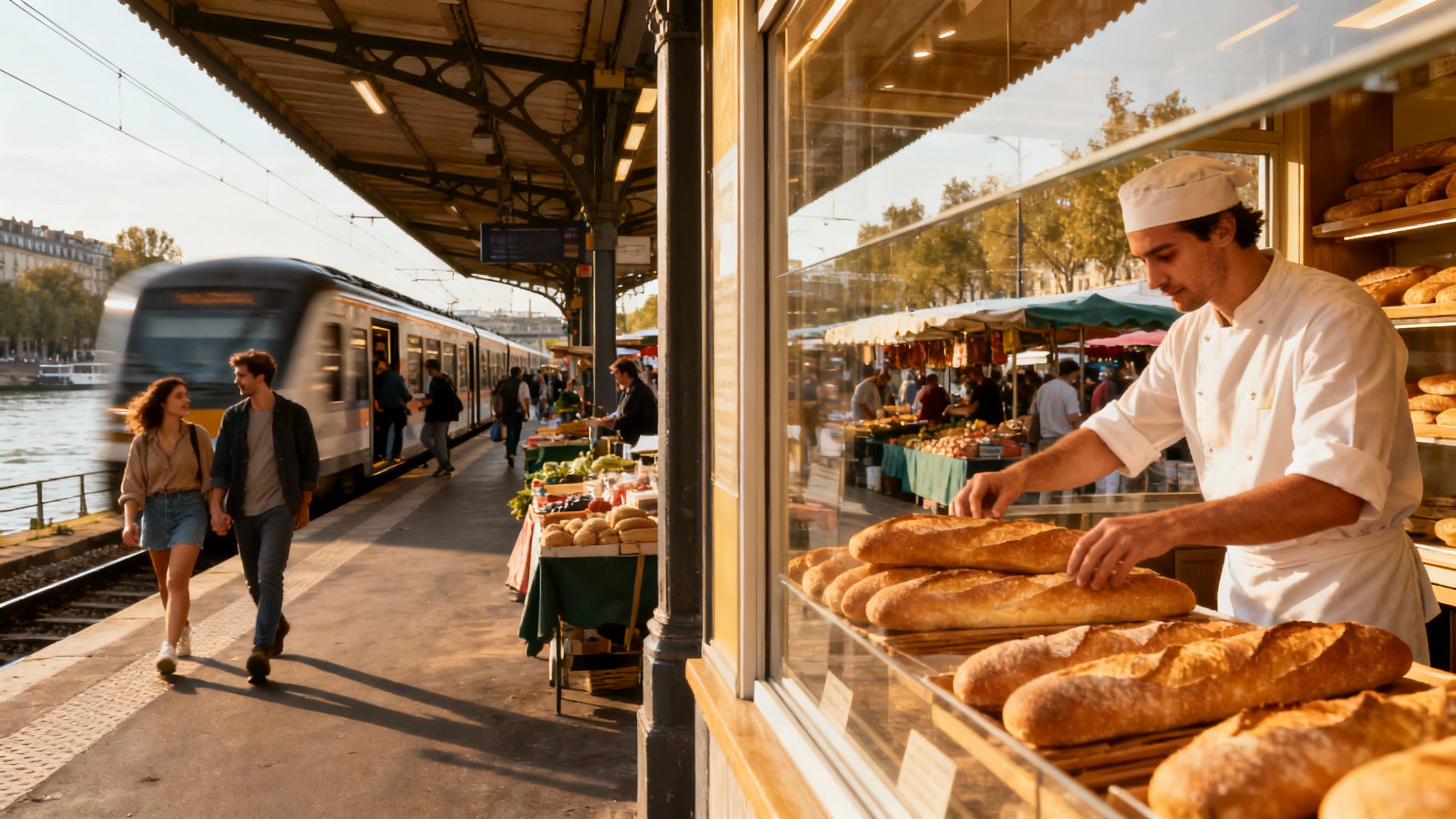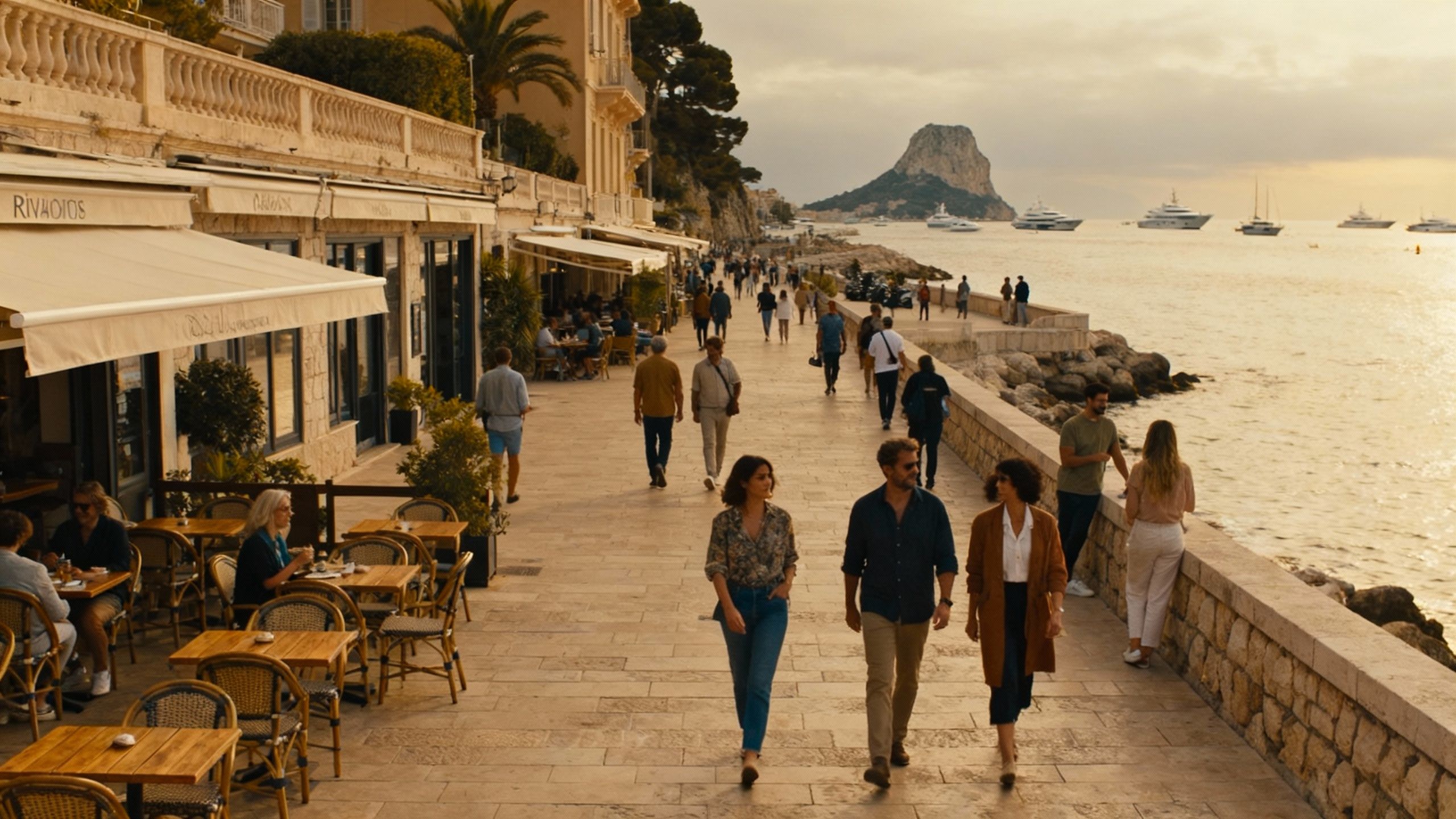Buy the Street, Not the City: Where to Live in France
City rhythms—Parisian markets, Lyon’s food culture, Marseille’s harbour life—drive where you should buy in France. Match lifestyle to micro‑location and verify costs with local notaires.
Imagine stepping out for espresso on Rue des Rosiers in Paris, then taking a weekend train to the vineyards outside Bordeaux — all without sacrificing daily cafés, good bread, or reliable public services. France offers that mix: densely lived urban centres where life is arranged around markets and squares, and a hinterland that rewards slower rhythms. But the way you choose a neighbourhood in Paris, Lyon or Marseille should be driven as much by how you want to live as by headline prices. Recent market analysis shows pockets of renewed activity and price movement that matter to international buyers.
Living French Urban Life — What it Actually Feels Like

City life in France is sensory and social. In Paris you hear scooters and market cries before you see the Seine; in Lyon weekday lunch becomes a ritual; in Marseille the harbour smell is part of the address. Cities are densely connected — trains, trams and markets structure the day. Demographics show continued urban concentration around Paris, Lyon and Marseille, which explains why neighbourhood choice matters more than city choice for long‑term happiness.
Paris: Streets that define a life
Walk Le Marais at 10am and you’ll find a boulangerie queue and staggered terraces; head to Canal Saint‑Martin for evenings of small restaurants and young professionals. Prices vary by a factor of two or more between arrondissements, but lifestyle differences are clearer: the 11th and 20th offer lively neighbourhood life for less than central 6th/7th. Notaires reports renewed transaction activity in Île‑de‑France in 2025, reinforcing that micro‑location matters as much as headline per‑m² figures.
Lyon & Marseille: City form shapes weekends
Lyon’s Presqu’île and Croix‑Rousse feed food culture and short commutes; older buyers prize Vieux‑Lyon for its narrow streets and proximity to bouchons. Marseille’s Cours Julien and Le Panier feel cinematic — music, markets and coastal walks define leisure. Choosing between these cities often comes down to whether you value gastronomic variety (Lyon), porte‑to‑sea lifestyle (Marseille) or metropolitan reach (Paris).
- Morning cafés, weekly markets, coastal weekends, live music spots, neighbourhood boulangeries, small‑scale parks and playgrounds
Making the Move: Where Lifestyle Meets Practical Reality

You can fall in love on a morning walk — but contracts and costs convert that feeling into a decision. In 2025 activity picked up across Île‑de‑France and other centres; that affects negotiation leeway. For international buyers this means timing, tax planning and the right local advisor combine to protect lifestyle objectives and long‑term value.
Property types and how they shape daily life
Haussmann apartments in Paris deliver scale and light but limited outdoor space; a renovated pied‑à‑terre suits cultural weekends and short stays. In Lyon, classic stone apartments with internal courtyards offer quieter family life. In Marseille, look for properties near the Corniche if sea views matter. Expect different maintenance regimes: central Paris flats often mean syndic rules; provincial houses mean gardens and seasonal upkeep.
Working with local experts who know the life you want
- 1. Choose an agency that demonstrates deep neighbourhood listings rather than generic city inventory; they can show weekday rhythms and noise patterns. 2. Ask for recent comparable sales (3–6 months) in the exact street — microtrends matter more than city averages. 3. Use a bilingual notaire and a tax adviser early to model upfront costs and ongoing taxes for non‑resident ownership. 4. Request a full syndic and building accounts review for multi‑unit properties to avoid surprise communal charges.
Insider Knowledge — What Expats Wish They'd Known
Expat experience converges on a few repeat lessons: language unlocks the best local offers; seasonal rhythms change neighbourhood energy; and micro‑location beats metropolitan brand. Many buyers underestimate running costs — syndic charges, local taxes and maintenance — which shift the lived value of a property. Honest conversations with current residents reveal realities that listings won’t.
Cultural integration and everyday social life
Learning French quickly expands social options beyond expat bubbles. Neighbourhood associations organise market fêtes and holiday events; showing up matters. For parents, local écoles and afternoon activities shape weekly routines. Expect a slower, more deliberate pace when dealing with bureaucracy — patience here saves money and stress.
Long‑term lifestyle tradeoffs
- 1) Buy near the market you’ll use weekly, not the iconic sight you’ll visit monthly. 2) Prioritise transport links if you expect frequent travel to other European cities. 3) Consider building rules: older central flats often limit alterations and rentals. 4) Plan for seasonal living costs (heating, garden care) if buying a house outside the city.
France will give you mornings at markets and evenings at small restaurants. To make that a daily reality rather than a holiday memory, tie lifestyle choices to property realities: the street’s rhythm, building rules, and realistic cost expectations. Local agencies who live and work in the neighbourhood are the practical bridge between dream and deed. Start by experiencing a week in the area, request full recent sales data from a local notaire, and meet the building syndic before you sign.
If you want a measured next step: test the neighbourhood for a week, obtain recent notaire comparables for the street, and ask an agency to prepare a two‑year cost forecast (taxes, syndic, maintenance). Those three actions separate aspiration from ownership and help you buy a life you’ll actually live.
Swedish expat who moved from Stockholm to Marbella in 2018. Specializes in cross-border legal navigation and residency considerations for Scandinavian buyers.


